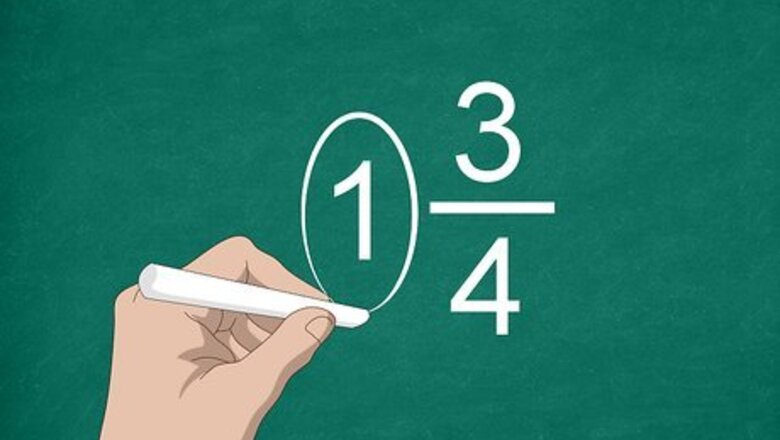
views
Identifying Parts of a Mixed Number
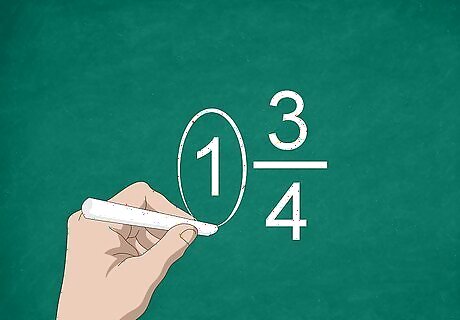
Look for the integer. A mixed number will contain a whole number and a fraction. The whole number should be positive, negative, or zero because it's an integer. For example, in the mixed number 1 3/4, 1 is the integer.
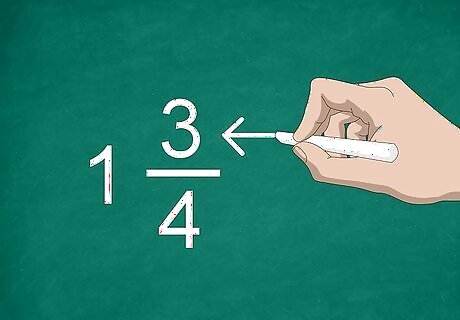
Recognize the numerator. Look at the fraction and find the number above the dividing line. This number is the numerator and it will tell you how many parts there are of the fraction. In the example 1 3/4, 3 is the numerator.
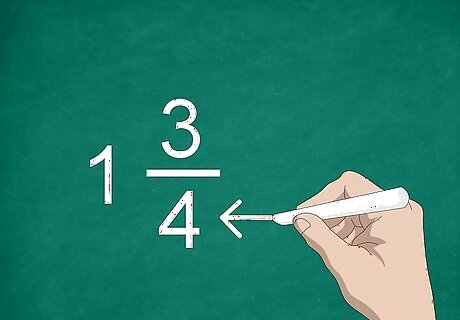
Find the denominator. Identify the number below the dividing line to find the denominator. This tells you how many parts it takes to make the whole number. For example, 4 is the denominator in the mixed fraction 1 3/4.
Converting to Improper Fractions and Subtracting
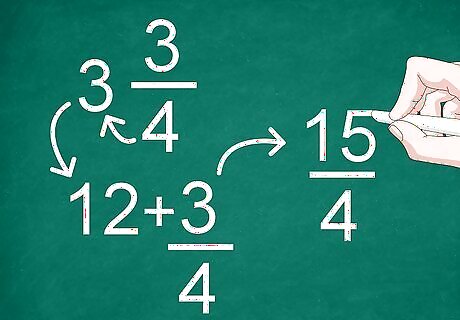
Change the mixed numbers into improper fractions. Multiply the integer by the denominator and add the numerator to come up with an improper fraction. Do this for both of the mixed numbers in your equation so you get 2 improper fractions. For example, to convert 3 3/4, 3 x 4 = 12 + 3 = 15/4. Another example, 1 1/2 would be 2 x 1 = 2 + 1 = 3/2.
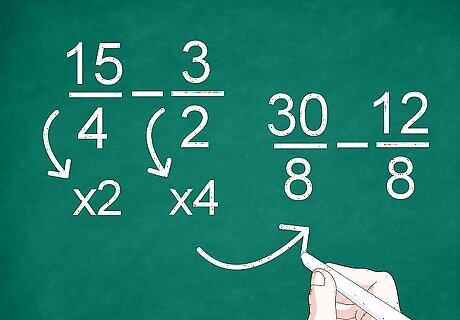
Find a lowest common denominator if necessary. If your improper fractions don't have the same denominators, convert the fractions so they do. To find the lowest common denominator, multiply each part of a fraction by the other fraction's denominator. For example to find a lowest common denominator for 15/4 - 3/2, multiply the 15 and 4 by 2 and multiply the 3 and 2 by 4. You should get 30/8 - 12/8. Then you can subtract the fractions. If the denominators of both fractions are the same, you can skip this step.
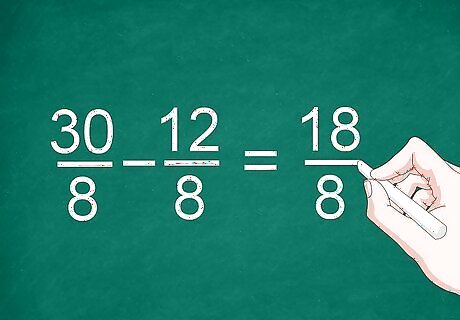
Subtract the numerators. Once the denominators are the same, you can easily subtract the numerators to get your result. For example, 30/8 - 12/8 = 18/8.
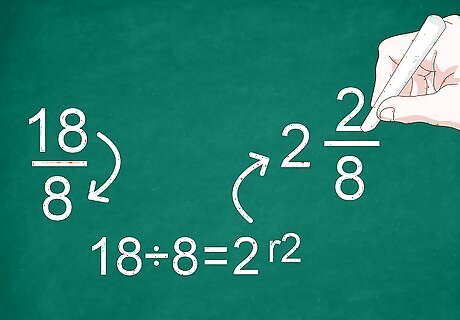
Convert the result to a mixed number. Divide the numerator by the denominator to get an integer and remainder. For example, 18 ÷ 8 = 2 with a remainder of 2. This can be written as 2 2/8. If you'd like to convert the improper fraction into a decimal, simply divide the numerator by the denominator.
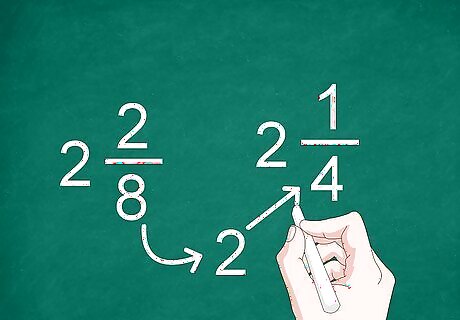
Simplify the result if necessary. Look at the fraction or mixed number you got after subtracting and decide if you can reduce the fraction further. This will give you the simplest result. The fraction in the example 2 2/8 can be reduced by 2 to get 2 1/4. Keep in mind that in some cases, you may not have a remainder. EXPERT TIP Joseph Meyer Joseph Meyer Math Teacher Joseph Meyer is a High School Math Teacher based in Pittsburgh, Pennsylvania. He is an educator at City Charter High School, where he has been teaching for over 7 years. Joseph is also the founder of Sandbox Math, an online learning community dedicated to helping students succeed in Algebra. His site is set apart by its focus on fostering genuine comprehension through step-by-step understanding (instead of just getting the correct final answer), enabling learners to identify and overcome misunderstandings and confidently take on any test they face. He received his MA in Physics from Case Western Reserve University and his BA in Physics from Baldwin Wallace University. Joseph Meyer Joseph Meyer Math Teacher To simplify fractions, you can divide both the numerator and denominator by a common factor. This creates a new, easier-to-use fraction with smaller components, but it represents the same value. For instance, if you divide both the numerator and denominator of 6/12 by 2, you get 3/6, which is equal to 1/2.
Subtracting the Whole Numbers and Fractions Separately
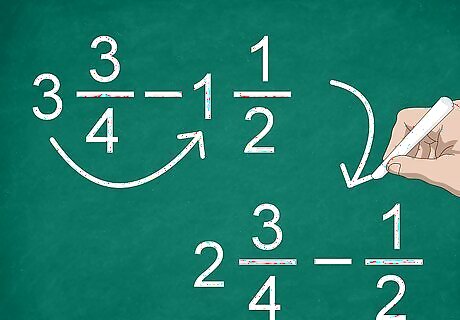
Subtract the whole numbers in the equation. Before you begin working with the fractions, identify the whole numbers and subtract them. If your equation is 3 3/4 - 1 1/2: Do 3 - 1 to get 2.
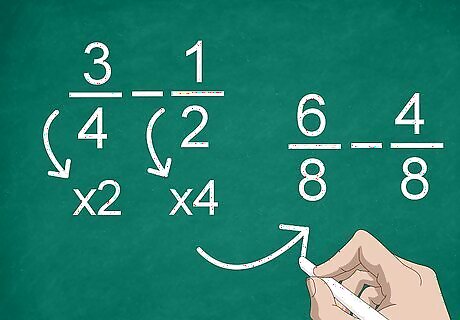
Find a lowest common denominator for the fractions if necessary. Since you've already subtracted the whole numbers, you're ready to subtract the fractions. If they have a different denominator, multiply each part of a fraction by the other fraction's denominator. For example, multiply 3 and 4 by 2 to get 6/8. For the other fraction, multiply 1 and 2 by 4 to get 4/8. If your fractions have the same denominator, you can skip this step.
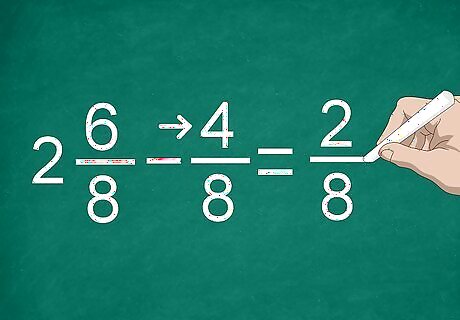
Subtract the numerators of the fractions. Once the denominators are the same, just subtract the numerators in your equation. Remember not to subtract the denominators as well. For the equation 6/8 - 4/8, subtract 4 from 6 to get 2/8.
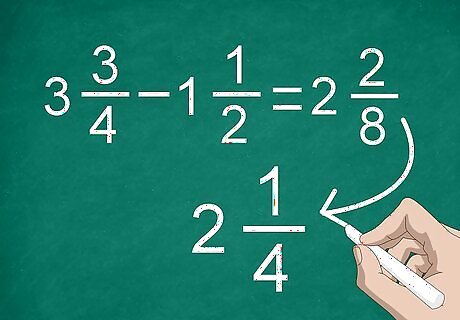
Write and simplify the result. Write down the whole number that you already subtracted and place the fraction that you're left with next to it. Reduce the fraction if possible. For 3 3/4 - 1 1/2, you'll get 2 2/8. Simplify 2/8 by 2 to get 1/4. Your finished answer will be 2 1/4.




















Comments
0 comment